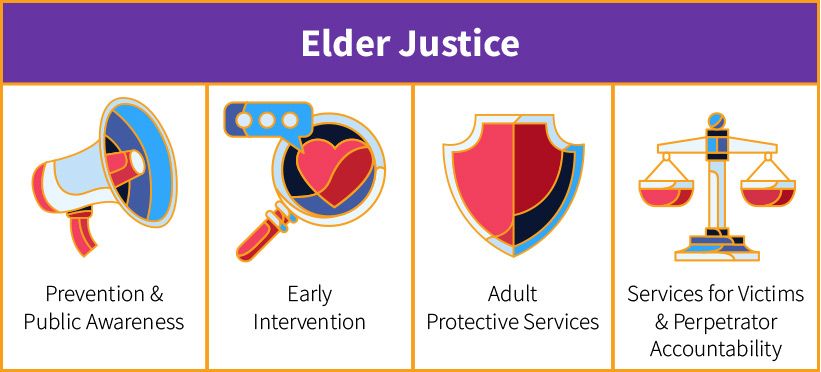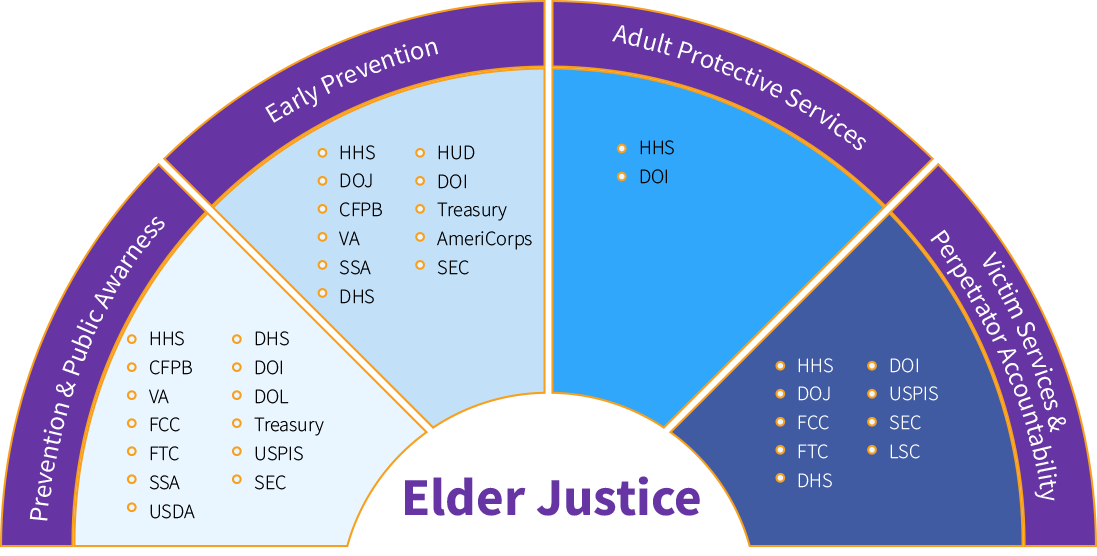“the knowing infliction of physical or psychological harm or the knowing deprivation of goods or services that are necessary to meet essential needs or to avoid physical or psychological harm.”
WHAT IS THETHER
Passed in 2010, the Elder Justice Act establishes the Elder Justice Coordinating Council to coordinate activities related to elder abuse, neglect, and exploitation across the federal government. The Elder Justice Coordinating Council is directed by the Office of the Secretary of Health and Human Services and the Secretary serves as the Chair of the Council. The HHS Secretary has assigned responsibility for implementing the EJCC to the Administration for Community Living (ACL).
BIGGEST PEOPLE IN CRYPTO 2024
In addition to the Secretary of Health and Human Services, the Elder Justice Act also names the Attorney General (AG) of the U.S. as a permanent member of the Council. The statute further provides for inclusion as Council members the heads of each federal department, agency, or governmental entity identified as administering programs related to abuse, neglect, or financial exploitation. As of 2022 there are 17 members.
AETHIR CRYPTO
The EJCC has engaged in a number of activities to carry out its mission of improving coordination among federal agencies working on elder justice issues, and released four products. Through the relationships forged by the EJCC, the member agencies have made significant progress through a number of accomplishments to address elder maltreatment, among them:
- The creation and adoption of the Eight Recommendations for Increased Federal Involvement in Addressing Elder Abuse, Neglect, and Exploitation, intended to guide federal agencies in focusing efforts on a common set of priorities to address elder maltreatment;
- The development of the National Adult Maltreatment Reporting System (NAMRS), the first of its kind effort to systematically collect from APS programs across the country standardized data about the incidence of elder maltreatment as reported to APS;
- With input from the Department of Health & Human Services Administration for Community Living, the Consumer Financial Protection Bureau, Department of the Treasury, and Financial Crimes Enforcement Network issued a joint memorandum on Financial Institution and Law Enforcement Efforts to Combat Elder Financial Exploitation; and
- The Department of Justice, FBI, U.S. Postal Inspection Service and five other federal law enforcement agencies undertake an annual Money Mule Initiative, targeting networks of individuals through which international fraudsters obtain proceeds of fraud schemes. These individuals, sometimes referred to as money mules, receive money from fraud victims and forward the illicit funds, often to overseas perpetrators. In 2021, U.S. law enforcement took action to address 4,750 money mules over 10 weeks; enforcement actions occurred in every state in the country. These actions more than doubled the number of actions taken during the previous year’s effort.
What is Elder Justice?
AXL CRYPTO
No matter how old we are, justice requires that all people are equal and full members of our communities, and the safety and dignity of all its members are preserved, including older adults. Unfortunately, we do not always live up to this ideal. Just like a stable building requires a strong set of support beams, we need a solid social structure so that older people can live their lives to the fullest, participate in our communities, and live free from abuse and neglect.
Strong, stable communities with structures to support people of all ages and abilities not only ensure justice and dignity for older people and adults with disabilities, but also secure the wellbeing and quality of life for us all.

The EJCC member agencies are cornerstones in these structures. EJCC members work to prevent abuse, neglect, and exploitation from happening through evidence-based primary prevention activities, such as public awareness and health literacy initiatives. They support early intervention services to identify, remove, or reduce risk factors for abuse, neglect, or exploitation. EJCC members support a coordinated, national Adult Protective Services system to intervene when maltreatment is happening. And they further coordinate efforts across various professional sectors, including social services, health and behavioral health services, and the legal and justice system to better serve victims of maltreatment and to hold perpetrators accountable.
Working together across these activities, the EJCC member agencies foster a coordinated, multi-disciplinary approach that bolsters all our elder justice efforts. Each of the EJCC member agencies has a role in one or more of the sectors of prevention and response.

What is Maltreatment?
WHAT CRYPTO SITES DON T REQUIRE ID
Elder maltreatment is a widespread social, public health, and economic issue. It is estimated that approximately 10 percent of older adults experience elder abuse, including physical abuse, psychological or verbal abuse, sexual abuse, financial exploitation, and neglect. Like other forms of interpersonal violence, elder abuse usually occurs behind closed doors, and remains “invisible.” In addition, data from state Adult Protective Services (APS) agencies show an increasing trend in reports of elder abuse, despite estimates that as few as 1 in 14 cases of elder abuse, and 1 in 44 cases of financial exploitation, come to the attention of authorities.
Research has demonstrated that elder maltreatment has significant consequences for the health, well-being, and independence of our seniors. The problem is exacerbated by a lack of standardized practice, public awareness, and public policy guidelines at the national level.
Elder maltreatment can take many forms. Some older adults will experience multiple forms of maltreatment simultaneously, referred to as poly-victimization. Here we provide definitions of common types of maltreatment. The definition of scams & frauds comes from the Department of Justice. The other definitions are taken from the Elder Justice Act.
IS ICP CRYPTO DEAD
NASHVILLE BITCOIN CONFERENCE LOCATION
“(A) the failure of a caregiver or fiduciary to provide the goods or services that are necessary to maintain the health or safely of an elder; or ”(B) self-neglect."
PANGOLIN CRYPTO PRICE PREDICTION
“the fraudulent or otherwise illegal, unauthorized, or improper act or process of an individual, including a caregiver or fiduciary, that uses the resources of an elder for monetary or personal benefit, profit, or gain, or that results in depriving an elder of rightful access to, or use of, benefits, resources, belongings, or assets.”
COINBASE CAREEERS
“an adult's inability, due to physical or mental impairment or diminished capacity, to perform essential self-care tasks including - (A) obtaining essential food, clothing, shelter, and medical care; (B) obtaining goods and services necessary to maintain physical health, mental health, or general safety; or (C) managing one's own financial affairs.”
MOONSHOT CRYPTO
“an act targeting older adults in which attempts are made to deceive with promises of goods, services, or financial benefits that do not exist, were never intended to be provided, or were misrepresented. This differs from financial exploitation carried out by a relative or other known and trusted person, and may include robocalls and online scams.”